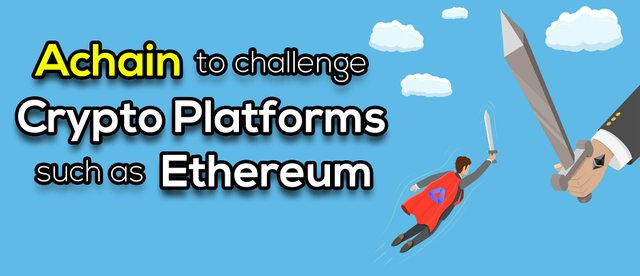
Blockchain technology is the next tech innovation we are all waiting for. The technologies we are experiencing today evolved so much during the last two decades. The gadgets and applications we use, and the Internet sites we visit, are all affected by technologies. Despite the advancements of today like small packages being delivered by drones and games interacting with the real world through augmented reality, there are still things being traditional and the best example are centralized systems.

Centralized systems pertain to a database or organization where we can only access their products or services in a centralized location or entity. Banks are the best examples of a centralized organization because we deposit our money to them and we can only get our money from them. Google is one of the best examples of a digital centralized organization using databases because when we search, do our emails, search the vicinity, and use their other services, we access their servers and they give us our queries. Their databases may be in different physical locations but they are still a centralized entity.

Most people around the world are being controlled by centralized entities without them knowing. When we deposit our money to banks, they have the full control with our money and they’re still vulnerable to robbery and hacking. When we give our IDs to the government, they have our identities and they may use it for malicious activities. When we exercise our right to vote, the database holding our votes may manipulate the outcome. When we search our destination during our commute, the navigational applications may give us wrong estimates of our travel time and they may defer us the right path because we are only accessing them from their server. You see, these are only some of the scenarios people experience around the world when dealing with centralized systems or entities.

Good thing blockchain technology came into fruition since Satoshi Nakamoto started Bitcoin in 2009, the first commercially available cryptocurrency. The last decade created the cloud storage that puts our data in the Internet and not in our physical hard drives but current cloud storages are still centralized. Blockchain is a technology that acts a distributed ledger wherein all nodes connected in the blockchain verifies the transactions. Cryptocurrency is a digital currency that gives value to the blockchain and its price is dictated by the traders. There are two kinds of cryptocurrencies, a coin and a token. A coin can be mined while a token can’t be mined because it’s an application built on top of a platform. Both kinds fuel a blockchain network because it can be used for the service of that blockchain.

Bitcoin is the most used cryptocurrency for payments. Ethereum is the most used cryptocurrency platform. A cryptocurrency platform is a blockchain technology that can build decentralized applications on top of it, create its own tokens, and make use of that platform’s blockchain network. Since blockchain technology is continuing to evolve, there are now utility coins and tokens with specific uses in various industries such as health care, electricity, fitness, and so on.
Blockchain technology has many benefits and these are the following:
- Decentralization
There is no central entity to handle all our data, money, or assets so all of these will be back to the hands of the people. - Transparency and trust
All transactions are visible in the blockchain so verifying transactions where it came from and where it will go is just easy. - Immutability
Data written in the blockchain is almost impossible to tamper because to be able to do this, all nodes in the blockchain needs to be hacked and that is a very very tedious process. To date, only exchanges and wallets are the ones being hacked, not yet a blockchain network. - High availability
There are hundreds or thousands of nodes in the blockchain network verifying the transactions so if a couple of nodes become unavailable, some will step up. - Highly secure
Blockchain technology is based from cryptography so it’s very much secure. - Simplification of current paradigms
In an institution or organization, there are separate databases on different departments. In a blockchain technology, all data and transactions can be stored and it will be verified by the whole network so no need for separate database systems for different kinds of data. - Faster dealings
In a financial process, there are many steps to accomplish so there are many processes to check the authenticity of a transaction such as verification, reconciliation, and clearance. In a blockchain environment, a single version of agreed upon data will be the only one needed. - Cost saving
Since transactions and data will just be verified by the blockchain, this will surely eliminate overhead costs because there would be no need for some third party to verify everything.
Despite the nine year advancements of blockchain technology and cryptocurrency in general, there are still five main problems arising from them:
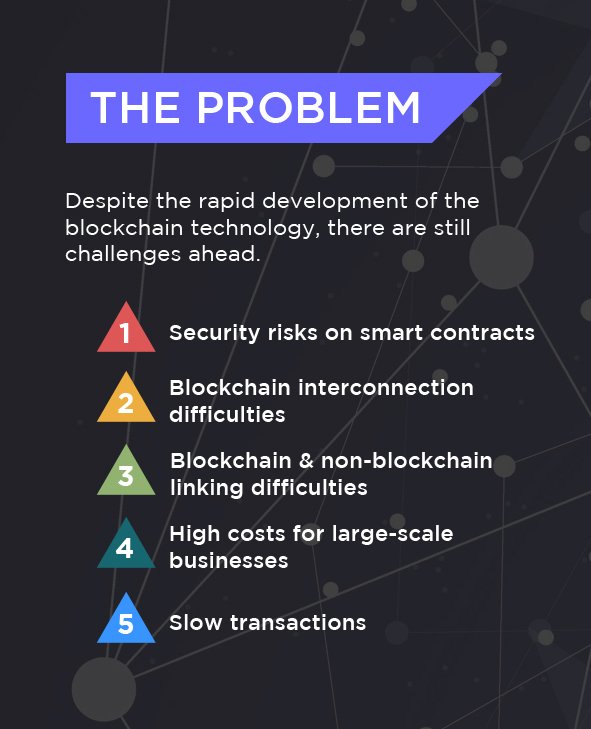
- Security risks on smart contracts
Smart contracts are built on top of a blockchain technology. If hackers manage to hack the base platform, they can hack all the applications created by the platform since they just follow the main codes of the base platform. - Blockchain interconnection difficulties
There are around 2,000 coins and tokens to date but they couldn’t easily be interconnected. Just like in Ethereum, there are many ERC-20 standard tokens but they can’t communicate with each other. - Blockchain and non-blockchain linking difficulties
There are some merchants that are already accepting some cryptocurrencies but overall, it’s still not easy to convert our cash to cryptocurrency or use cryptocurrency for all the things we need to pay like groceries, gasoline, clothes, and so on. - High-cost for large-scale businesses
For large businesses with the need to process thousands or millions of data, there is still not a single blockchain technology that can handle large-scale data movements like enterprise solutions for example. Thus, large businesses still rely on centralized database systems. - Slow transactions
Bitcoin is the most used cryptocurrency but it can only handle 7 transactions per second. I’m sure most of you already experienced sending Bitcoin and despite setting high transaction fees, it still took hours or worse, even days before confirming the transaction and sending your Bitcoin to another address in December 2017 when Bitcoin reached its highest price of $20,089.
Bitcoin is a mere cryptocurrency used for payments and can be considered Blockchain 1.0. Ethereum improved the foundations of Bitcoin by creating smart contracts where applications can be made on top of the Ethereum platform and can be considered Blockchain 2.0. Despite the advancements of Ethereum, applications in its platform can’t connect with each other. Moreover, it also can’t connect with other blockchain technologies. Good thing there comes Achain, a blockchain technology that is set to challenge the dominance of Ethereum as a cryptocurrency platform.
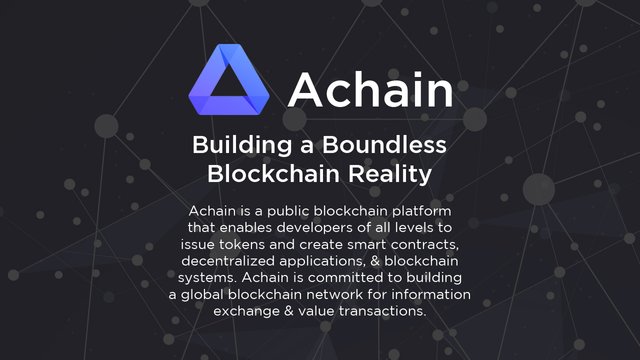
Achain plans to improve current blockchain technologies by answering the five main problems above in three phases.
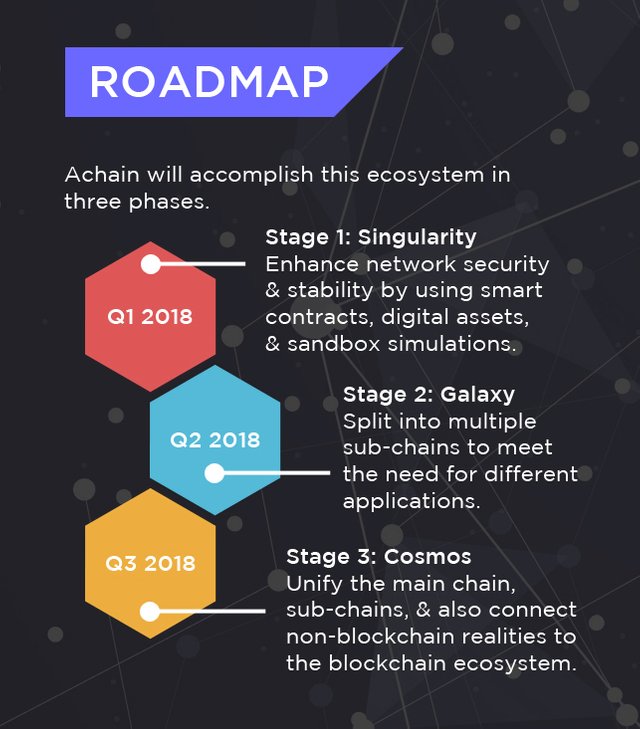
The first stage is called Singularity. This is the stage where all testing and improvements are done before deploying the application to the main network. The second stage is called Galaxy. This is the stage where chains are being split to sub-chains to satisfy the different uses of various applications. Achain currently is in the Galaxy stage. The third stage is called Cosmos. This is the stage where the promise to connect the main chain, sub-chains, connect blockchain technologies from each other, and even link blockchain and non-blockchain realities.
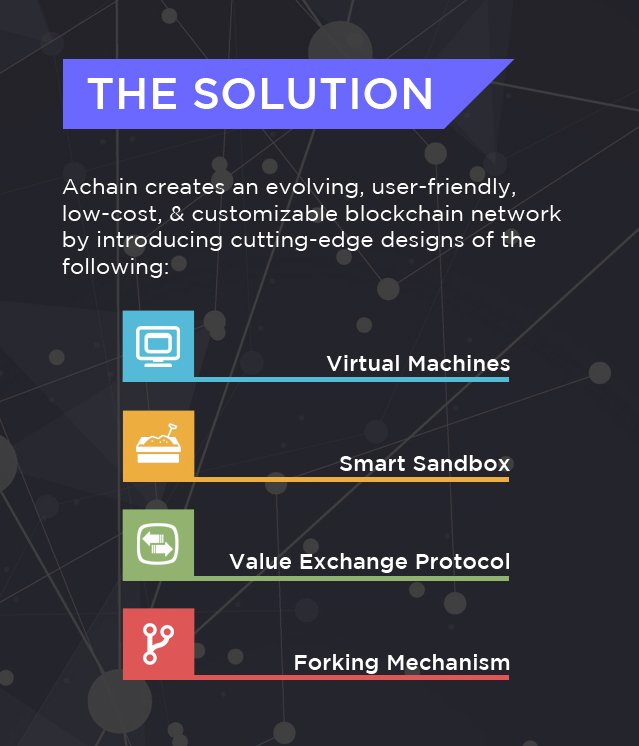
Achain is creating a blockchain network with direct implementations of Virtual Machines, Smart Sandbox, Value Exchange Protocol, and Forking Mechanism. A virtual machine provides a simulated computer that guest applications will see as the whole system. It is not necessarily sandboxed since it can provide write access to any shared location on the host computer. It can provide write access to any shared location on the host computer. A smart sandbox does not have to simulate a computer, just restrict access permissions for running applications. The Value Exchange Protocol is a gateway for information sharing and value exchanges using the application’s cryptocurrency. The forking mechanism is their principle that they will embrace forking to create sub-chains built on top of Achain because of different uses. To other blockchain technologies, a forking is either a sign of improvement or due to the managements’ irreconcilable differences from running the blockchain. In Achain, they’ll be creating a fork of the blockchain but all created forks will be of the same level of Achain.
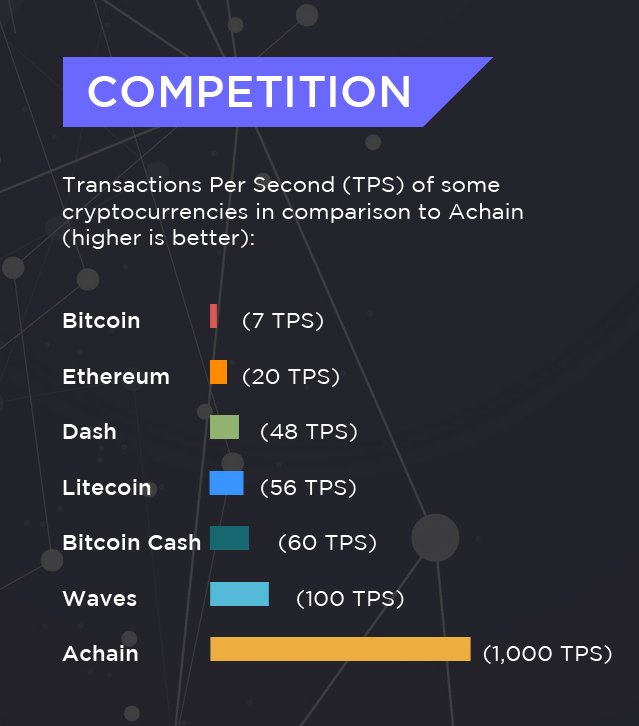
Achain has the throughput of 1,000 transactions per second. Cryptocurrencies used as payment such as Bitcoin, Dash, Litecoin, and Bitcoin Cash only have 7, 48, 58, and 60 transactions per second respectively. Cryptocurrencies used as platform such as Ethereum and Waves have 20 and 100 transactions per second respectively.
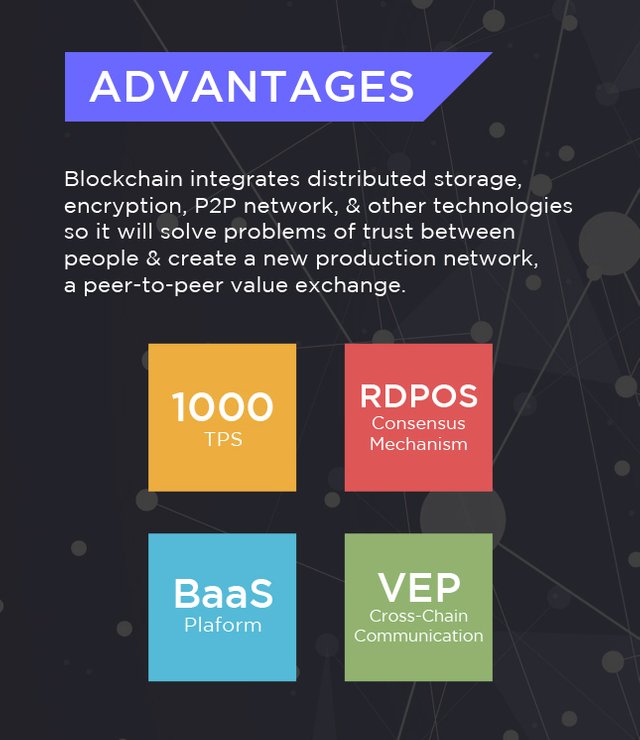
Achain is using a more refined Result-Delegated Proof of Stake (RDPOS) which is much better than Delegated Proof of Stake (DPOS) and Proof of Stake (POS). Most first and second generation blockchain technologies still use Proof of Work (POW) which is very much wasteful to resources mainly electricity. Achain is implementing Blockchain as a Service (BaaS) wherein their blockchain network has more use than just a mere digital currency. Just like what’s mentioned above, Achain uses Value Exchange Protocol by using cross-chain communication.
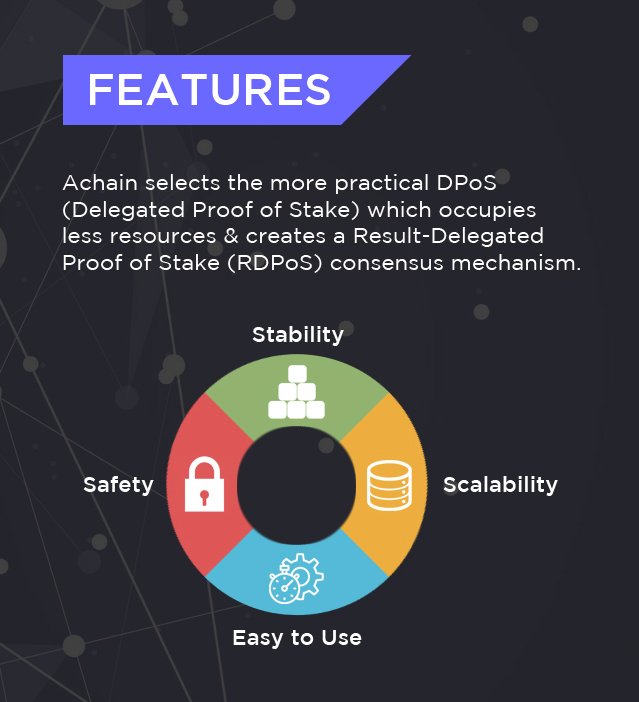
Achain was founded by Tony Cui in 2015 and their team is composed of 17 members who are very much experienced in the fields of blockchain technology and cryptocurrency. The four main features of Achain is to have a blockchain network that has stability, safety, scalability, and easy to use so it sets to challenge the dominance of other cryptocurrency platforms such as Ethereum and Waves. The coin of Achain is ACT and is currently being traded in major exchanges such as Huobi, OKEx, HitBTC, MasterDAX, CoinEgg, and Kucoin. There are already many decentralized applications built on top of Achain such as Pundi X, Linkeye, KCash, Simon’s Coin, Coinfix, and SelfSell. Instead of just being tokens like the ones built on top of Ethereum, the decentralized applications built on top of Achain are all coins so they can be mined.
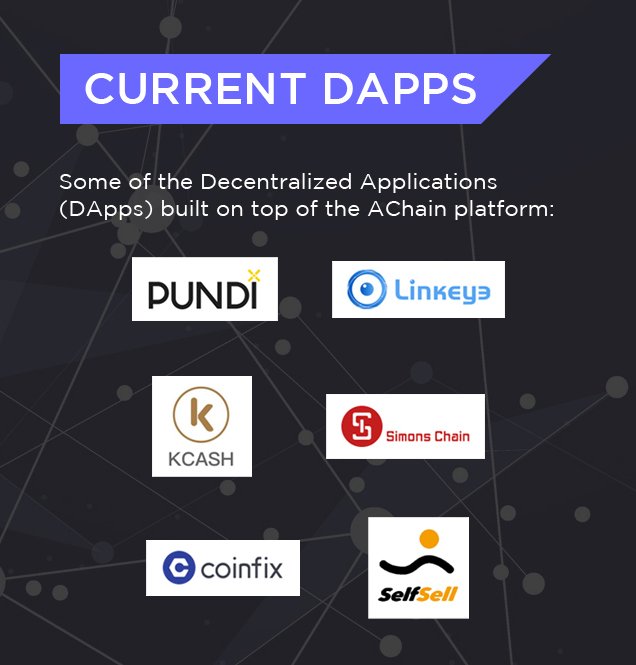
For more information about Achain, you can visit their website https://www.achain.com/ and start reading their whitepaper.
Disclaimer: This is not an investment advice. Invest at your own risk. Invest only the amount you can afford to lose because the world of cryptocurrency is a very speculative one.
Website: https://www.achain.com/
Whitepaper: https://www.achain.com/Achain%20Whitepaper%202.0_EN.pdf
Facebook: https://www.facebook.com/AchainOfficial/
Twitter: https://twitter.com/AchainOfficial
Telegram: https://t.me/AchainOfficial
Infographics: https://ibb.co/hwAaJ8
Author: https://bitcointalk.org/index.php?action=profile;u=1767289